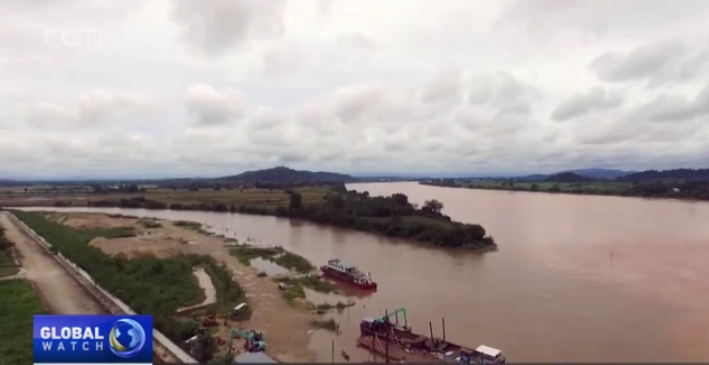Lancang-Mekong River Cooperation: Regional countries battle severe drought

The Lancang-Mekong River is a vital waterway linking six countries. In China, it's known as the Lancang River. Once it flows out of Yunnan Province, it's called the Mekong, which runs through Myanmar, Laos, Thailand, Cambodia, and Vietnam. Its waters feed more than seventy million people.
In the latter half of 2019, severe drought swept across the Mekong River Basin. This led to record-low water levels, disrupting livelihoods. In Chiang Saen district of northern Thailand, fishing is difficult, with smaller fish, fewer catch.
SINGHKHAM WANTANARM Fisherman "We still have rain but it's just a small amount. It's not enough. The water level today is because of the flow from the north, not the rain. Normally at this time of year, the water level should be really high, almost reaching the riverside."
Three hundred kilometers upstream of the Mekong, is the village of Nannuoshan in China's Yunnan Province. Locals rely heavily on cultivating Pu'er tea. But rising temperatures and the lowest rainfall in decades have reduced the output.
LAN PI Tea Farmer "The annual output of my tea plantation in 2018 is 150 kilograms, but in 2019, it was reduced by two-thirds to 56 kilograms. This year, I only harvested 36 kilograms, a loss of three-quarters. My father is over 80 years old. He said he's never experienced such a drought. It's the very first time."
MENG QINGSHENG Menghai, Yunnan Province "Residents here faced a severe water shortage when a drought hit in 2019. It took half a year to discover alternative sources, until they found this. Along with 25 families, it also supports four agri-product factories. Across the entire province, water shortage caused by drought has affected over one million people."
The lingering drought cut off some one hundred rivers in Yunnan province, drying up nearly two hundred reservoirs. Latest study shows, the annual rainfall of 2019 in the Lancang River Basin is about 25 percent lower than its long-term average, and across the Lancang-Mekong River Basin, the year 2019 recorded the most severe drought in over a century.
YAN HONGMING Chief Forecaster of Yunnan Meteorological Service "The reduced rainfall and drought in Yunnan Province will have a great impact on the surface runoff. If the surface runoff is less, it affects the river's water flow."
In April, US consulting company Eyes on Earth released a report which attributed the severe lack of water in the Lower Mekong during the wet season of 2019 to a restriction of water flowing from the upper Mekong.
In response, the intergovernmental Mekong River Commission said the findings did not reflect the actual hydrological conditions. Instead, it explained, the 2019 drought was due largely to a shortened rainy season, and an El Nin-yo event that triggered higher temperatures and higher rates of evaporation.
AN PICH HATDA Chief Executive Officer, Mekong River Commission "What we found is that the monsoon rain began almost two weeks late, and stopped about three weeks earlier than usual, so what we receive is that only about 75 percent of rainfall that we received in 2019 as compared to the previous normal year."
The after-effects of the drought continues to plague China and some Mekong countries. The Pu'er trees may need three to five years for a full recovery. In Chiang Saen, some farmers find it difficult to pump water for their crops.
MUENG-IN SANGMUENG Farmer "I need to have very long pipes to pump water, and I have to pump very often for watering my crops. My harvest is not 100 percent. Some of my crops have died."
The Lancang-Mekong countries are now conducting a joint study on the 2019 drought and low water flows. The findings will help improve data sharing, promote coordination, and ensure more effective responses to droughts and water flow issues.
Meng Qingsheng, CGTN, Yunnan Province.
Editor: John Li